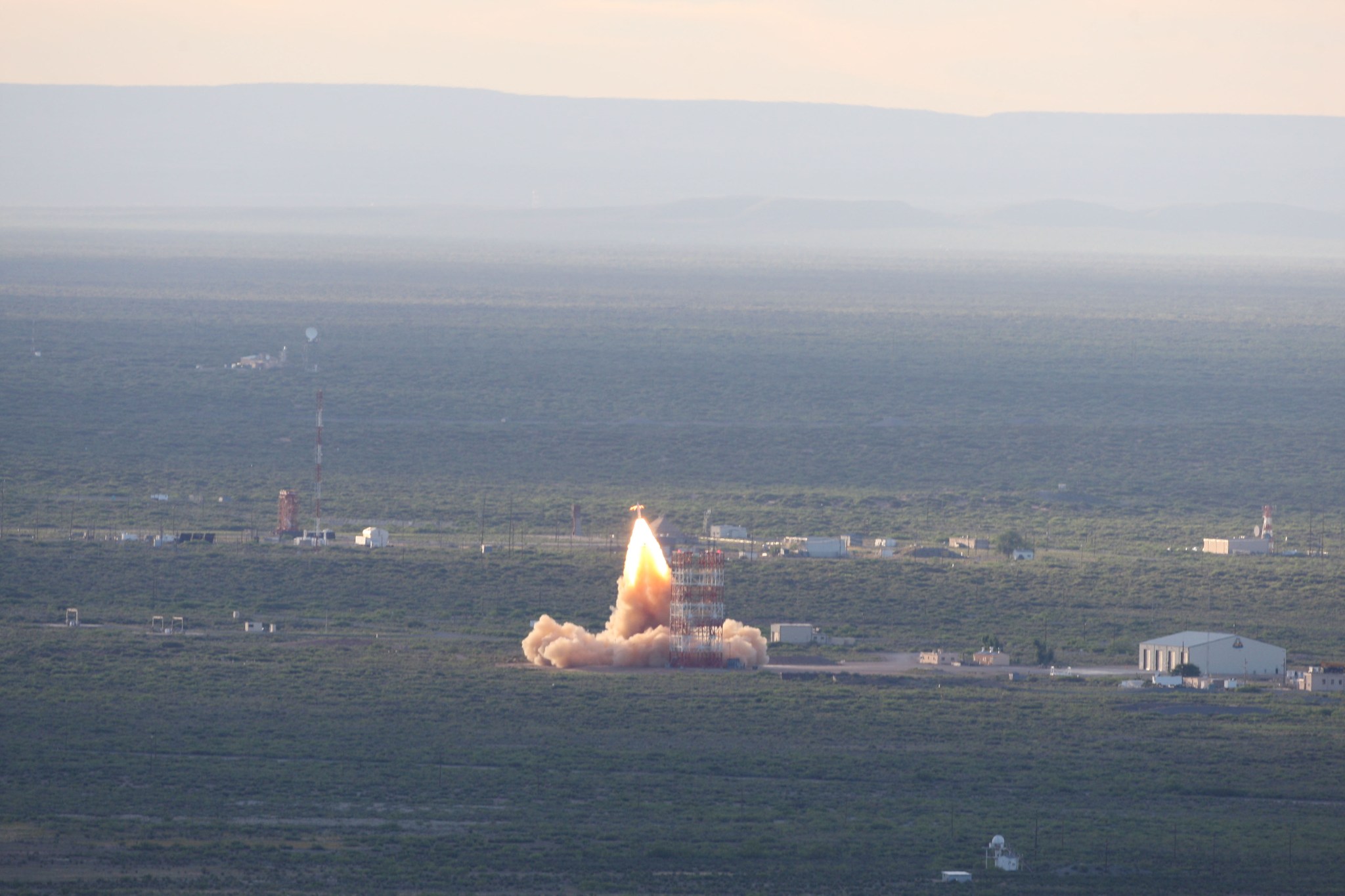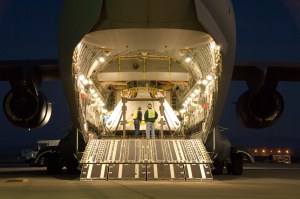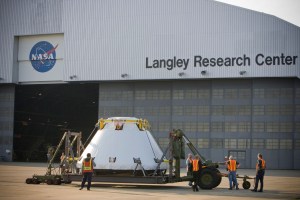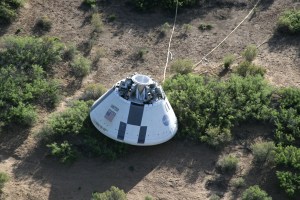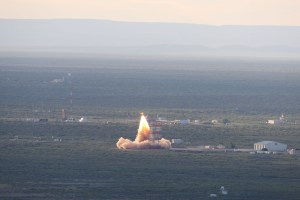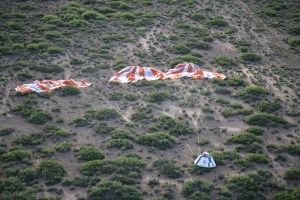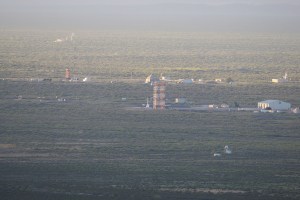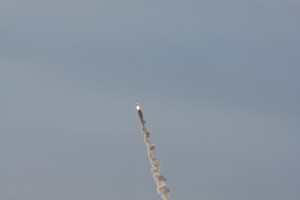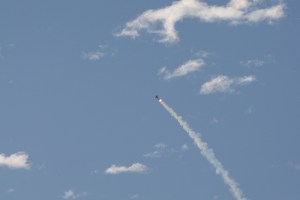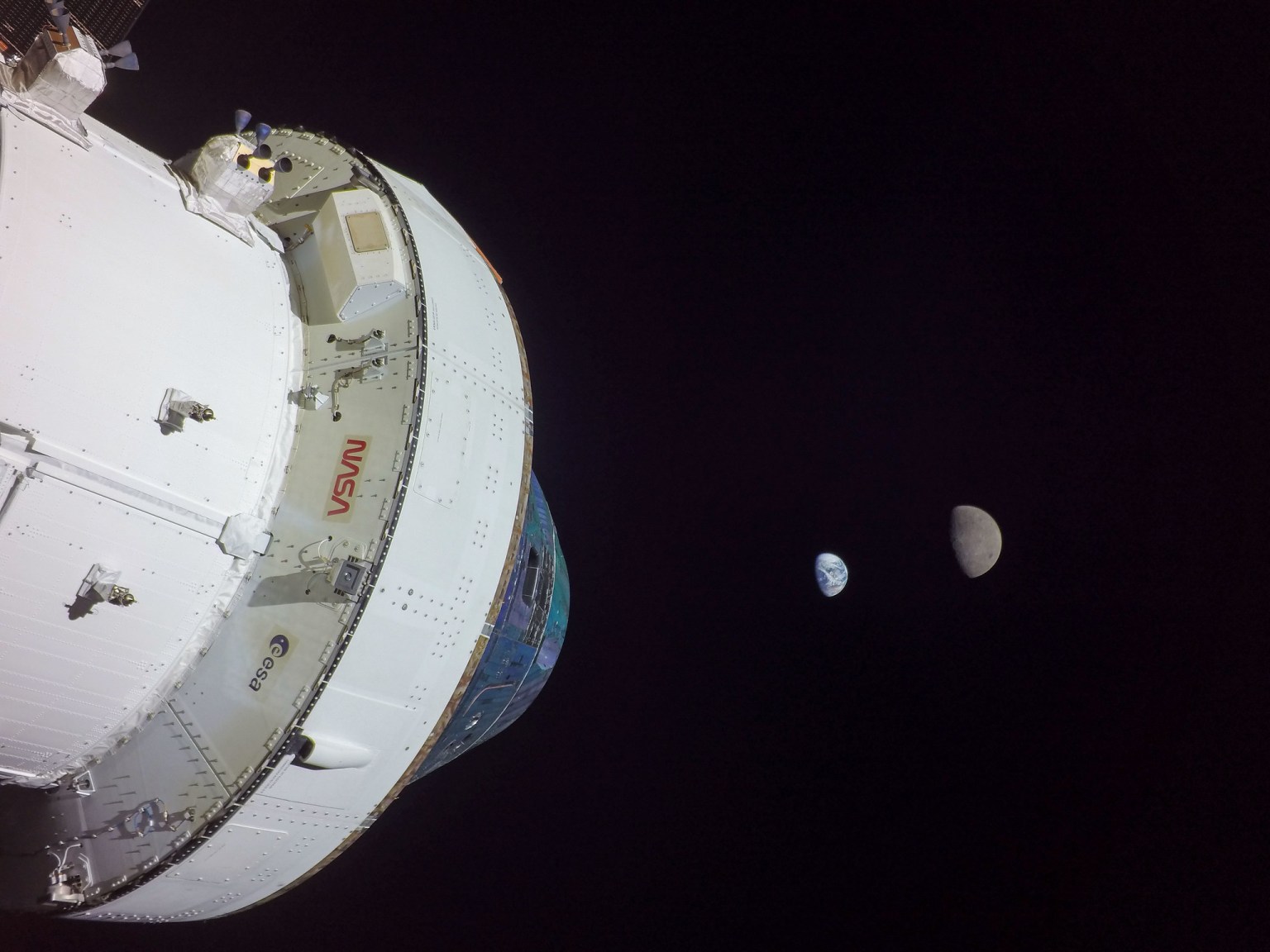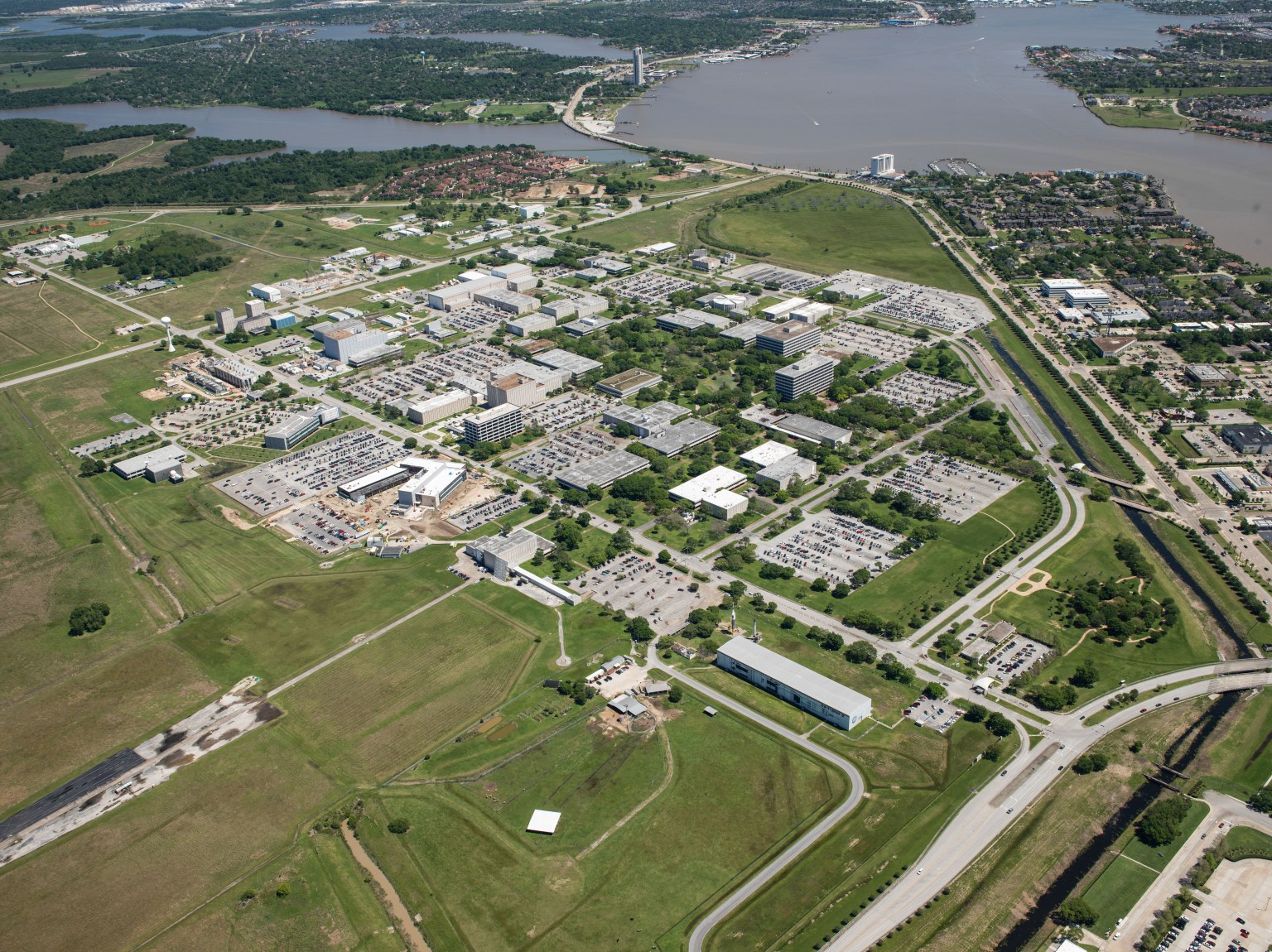Pad Abort-1
Mission Type
Program
Launch
Duration
On May 6, 2010, at the U.S. Army’s White Sands Missile Range (WSMR) near Las Cruces, New Mexico, NASA
conducted a successful flight test known as Pad Abort-1, a test of the Orion launch abort system (LAS), a critical
safety system that sits atop Orion at launch and during ascent. If an emergency occurs during launch, the LAS
pulls Orion and its crew away from the rocket for a safe landing in the Atlantic Ocean. Pad Abort-1 demonstrated
the capability of the LAS to propel the crew module to a safe distance during a ground-initiated abort on the
launch pad. The flight test lasted about 135 seconds from launch until the crew module touched down about a mile north of the launch pad.
The test involved three motors. An abort motor produced a momentary half-million pounds of thrust to propel
the crew module away from the pad. It burned for approximately six seconds, with the highest impulse in
the first 2.5 seconds. The crew module reached a speed of approximately 445 mph in the first three seconds, with a maximum velocity of 539 mph in its upward trajectory to about 1.2 miles high.
The attitude control motor fired simultaneously with the abort motor and steered the vehicle, using eight thrusters that produce up to 7,000 pounds of thrust. It provided adjustable thrust to keep the crew module on a controlled flight path and reoriented the vehicle as the abort system burned out.
The jettison motor, the only motor of the three that would be used in all nominal rocket launches, pulled the entire
launch abort system away from the crew module and cleared the way for parachute deployment and landing.
After explosive bolts fired and the jettison motor separated the system from the crew module, the recovery parachute system deployed. The parachutes guided the crew module to touchdown at 16.2 mph (24 feet per second), about one mile from the launch pad.
The Orion Program at NASA’s Johnson Space Center in Houston led the launch abort system test team. NASA’s Langley Research Center designed and built the boilerplate crew module for the test, and NASA’s Dryden
Flight Research Center prepared the crew module for integration and led the flight test vehicle integration at
WSMR with Lockheed Martin, the prime contractor to NASA for Orion.
| Launch Date | May 6, 2010 7:00 A.M. MDT |
| Launch Site | U.S. Army’s White Sands Missile Range, New Mexico Launch Complex 32E |
| Duration | 2 min., 15 sec. |
| Distance | 6,900 ft. downrange |
| Altitude | 6,336 ft. |





























